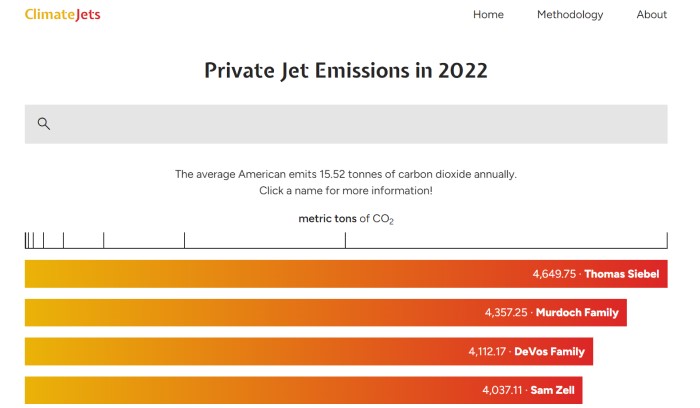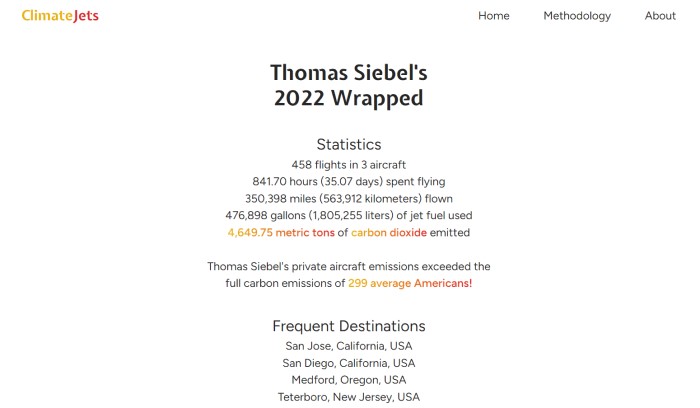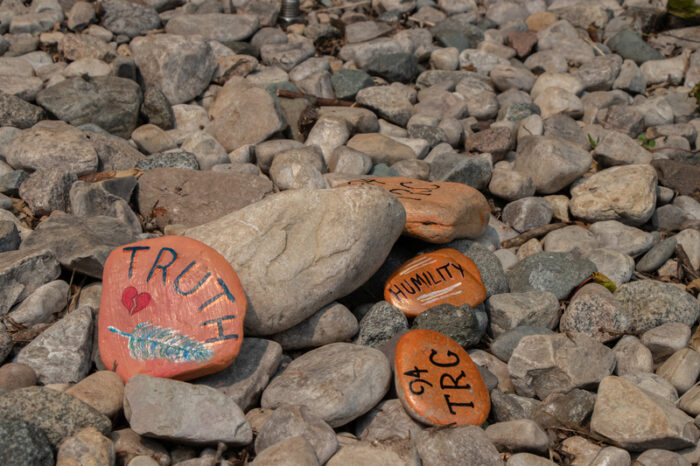A Seattle high school student's personal project has really caught the eyes of environmentalists. But when 17-year-old Akash Shendure first decided to make Climate Jets (climatejets.org), it was more about his own curiosity.
He had heard about how online activists had been tracking the private flights of billionaire Space X and Tesla owner, Elon Musk. He started to wonder about all of the other private jets being flown—and especially about the amount of carbon emissions that they were being produced per flight.
So this past January, he created a website that would easily collect all of the data about private jet flights and put them in a single place where the public could access them. Climate Jets was born!
Since then, however, his site has become a sensation. It began with him receiving comments and emails from people in Seattle, thanking him for creating the site. And it kept growing. He has now been interviewed countless times, including by major news outlets like The New York Times and CBC.
That's pretty amazing for a one-person project!
What does the site show?

A screenshot of the home page of Climate Jets. (Climatejets.org)
The website is pretty simple. On its main page, it shows a graph of prominent businesspeople and celebrities who frequently use private jets to travel. Then it shows the estimated CO2 emissions created by that person/family in 2022 in tonnes. It pairs these numbers with a reminder that the average American creates 15.52 tonnes of CO2 emissions annually.
You can then click on an individual bar in the graph to see further details on that person's jet emissions. For example, at the top of the list is an American businessman named Thomas Seibel, who has an artificial intelligence software company called C3.ai. His flights created 4,649.75 tonnes in 2022 alone.
That's more than 299 average Americans combined!
Why make the site?

According to Climate Jets, billionaire businessman Thomas Siebel was the top American private jet CO2 emitter last year. (Climatejets.org)
In an interview with CBC, Shendure said that he didn't make the site to focus on "individual people as much as the greater group (of the ultra-rich) ... I think the overall idea is: Do people really need to be flying in private jets in this day and age?"
In general, even the average American creates far more carbon emissions than most citizens of the world. Canadians are even worse at 18.58 tonnes per person. Much of this has to do with a reliance on cars, high home energy usage, and heating/cooling of a home.
But Shendure's point is that while many citizens are trying to cut down on their emissions by biking, taking public transit, or using lower home energy options, the ultra-rich are doing the opposite.
A response from the rich?
Microsoft founder Bill Gates is on Shendure's list. His representative says that his jets use cleaner fuel and that he contributes billions of dollars to climate-saving programs. (Getty Embed)
In the CBC interview, the reporter mentioned that both Jeff Bezos and Bill Gates, two billionaires on the Climate Jets list, say that they use sustainable aviation fuel (SAF) and use carbon offsetting for all of their flights. What does this mean?
SAF is a type of biofuel made from sources like corn grain, fats, algae, and more. The makers of these fuels say that the fuels produce 60 to 80 percent less carbon than normal jet fuel. Many nations are looking to SAF as a way to make all air travel greener in the future.
Carbon offsetting is a practice where people contribute money to fund a process that reduces carbon emissions in one place to 'offset', or balance out, the carbon they produce by, say, flying a private jet!
In theory, it is a decent idea, though it is also a practice that has been criticized as being a distraction and misleading. In a recent interview on CBC's What On Earth, Kate Ervine, associate professor at Saint Mary’s University in Halifax, says, "The biggest problem with carbon offsets is that they don't actually lower emissions."
And as Shendure stated, "Even if [businesspeople] are offsetting their emissions, they could still be funding those emission offsets without taking those [private] flights."
In the end, Shendure's project is highlighting a really important debate for the future. Does it make sense of any of us to rely on airplanes when the cost of emissions is so high? Are there better ways for us to travel?
Thankfully, we have young people like him who are dedicated to thinking about this problem!
What are carbon emissions?
Some experts say that magnetic levitation, or maglev, trains are the green future of transit. They travel almost as fast as planes, but produce almost no emissions. They are being tested in Japan and China. (Getty Embed)
In this post, we talked a bunch about carbon emissions, or CO2 emissions. This is a phrase that you may hear a lot.
This term refers to the amount of carbon dioxide (CO2) being released into our atmosphere by a certain activity or process. Why is this significant? Because CO2 is a greenhouse gas—it traps heat energy from the Sun, therefore raising the overall temperature of the planet. This is the driving force behind climate change.
As it turns out, a number of human activities release CO2 into the atmosphere. This is because so much of modern society is powered by the burning of fossil fuels (oil, gas, and coal) to produce energy. These fuels are rich in carbon, and as they are burned, CO2 is produced.
Not all processes are equal in the amount of CO2 emissions they produce. Near the very top of the list? Airplanes.
This is because jets require a lot of power to achieve takeoff, making their fuel particularly potent. Other experts have pointed to the fact that these planes also release CO2 directly into the upper atmosphere, where they do the greatest amount of damage to the balance of our atmosphere.
 Private jets carry very few passengers, but burn a lot of fuel to make their journeys. (Photo 28248163 © Sophiejames | Dreamstime.com)
Private jets carry very few passengers, but burn a lot of fuel to make their journeys. (Photo 28248163 © Sophiejames | Dreamstime.com)









